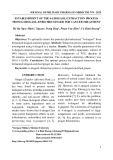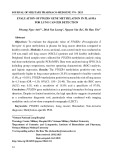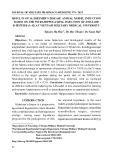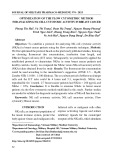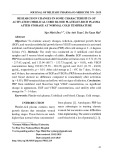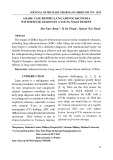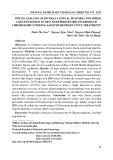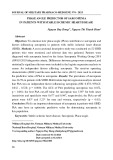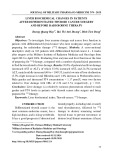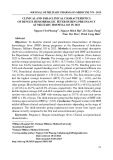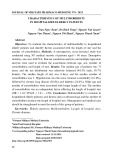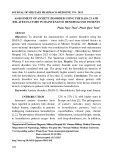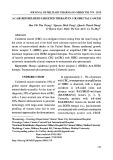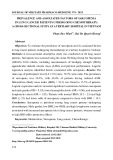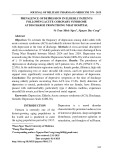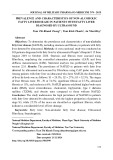
JOURNAL OF MILITARY PHARMACO-MEDICINE N04 - 2025
102
ASSESSMENT OF ANXIETY DISORDER USING THE DASS-21 AND
RELATED FACTORS IN MAINTENANCE HEMODIALYSIS PATIENTS
Pham Ngoc Thao1, Pham Quoc Toan2*
Abstract
Objectives: To describe the characteristics of anxiety disorders using the
DASS-21 (depression - anxiety - stress scale-21) and some related factors in
patients with maintenance hemodialysis at Military Hospital 103. Methods: A
cross-sectional descriptive study was conducted on 60 patients with maintenance
hemodialysis treated at the Department of Nephrology - Hemodialysis, Military
Hospital 103, from August 2023 to May 2024. Patients' anxiety disorders were
evaluated using the DASS-21. The Spearman correlation analysis and Mann-
Whitney U test were used to analyze the data. Results: The rate of patients with
anxiety disorders was 35.0%. The anxiety disorder score was negatively and
significantly correlated with age. The group with the hemodialysis duration of
more than 24 months showed significantly higher anxiety scores than the group
with the hemodialysis duration of less than 12 months. Conclusion: The rate of
anxiety disorders was high among end-stage renal disease patients with
maintenance hemodialysis. Age and hemodialysis duration were factors related to
anxiety symptoms in patients with maintenance hemodialysis.
Keywords: Anxiety disorders; DASS-21; Hemodialysis; End-stage renal disease.
INTRODUCTION
Increased anxiety disorders have
been reported in patients with chronic
kidney disease, especially in patients
undergoing maintenance hemodialysis
[1, 2]. The prevalence of anxiety disorders
in hemodialysis patients ranges from
12% to 52% [1], with higher rates in
Europe and Asia [2]. The pathogenesis
of anxiety includes many factors
in hemodialysis patients, such as
comorbidities, chronic pain, chronic
inflammation, increased fatigue, uremia,
and sleep disturbance, etc. In addition,
1Department of Functional Diagnosis, Military Hospital 103, Vietnam Military Medical University
2Department of Nephrology, Military Hospital 103, Vietnam Military Medical University
*Corresponding author: Pham Quoc Toan (toannephro@gmail.com)
Date received: 02/12/2024
Date accepted: 02/3/2025
http://doi.org/10.56535/jmpm.v50i4.1108





